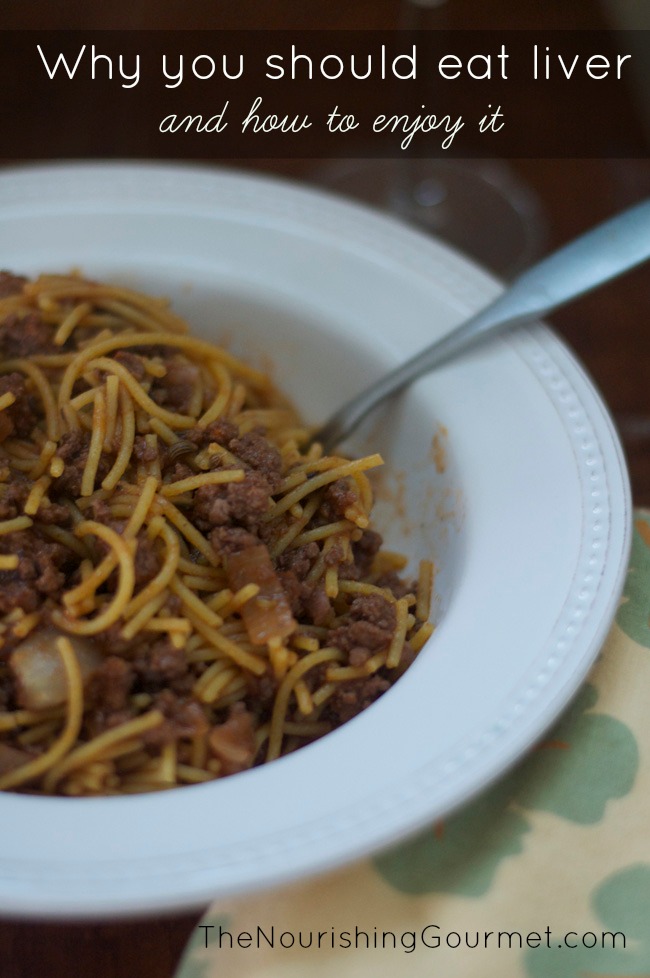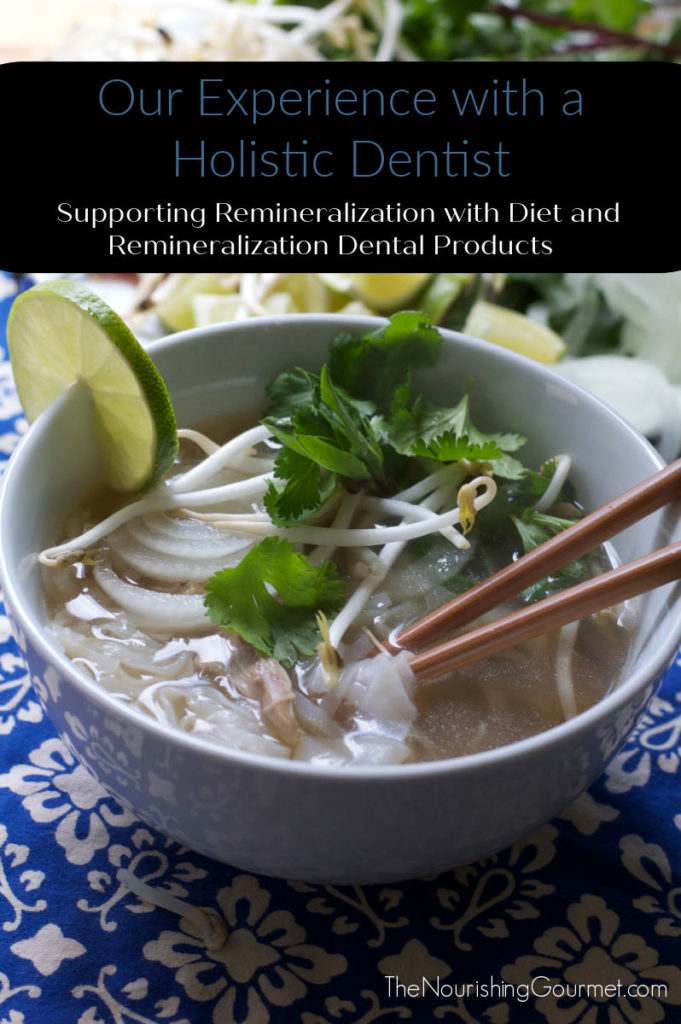
When I first read Nourishing Traditions, I was a little shocked and definitely grossed out at the strong suggestion to put offal (such as liver, sweetbreads, and kidney) back on our table. I was sure that wasn’t going to happen. But two things changed my mind. First, I read the work that inspired Nourishing Traditions, Nutrition and Physical Degeneration by Dr. Weston A. Price. This convinced me that not only was this a traditional practice but that it had significant nutritional benefits that weren’t too be ignored simply because I was squeamish. The second thing that happened to me was having children. I cared about giving them the best nutritional boost I could, and feeding them liver was a wonderful way to do it.
Liver is a superfood (some even call it the ultimate superfood) with many important nutrients. As you will remember from my post on supplements, I am not personally opposed to taking supplements, though there are some cautions there. But primarily we should be concerned with the nutrition in our food, not in our vitamins. For those wanting to eat a traditional diet, eating liver can be an important part of it. In fact, it can offer you many nutrients that we typically look to supplement pills to fill.
If eating liver grosses you out as much as it did me, don’t worry. It can be easier and more enjoyable than you think.
Why Liver is Important
If you remember from my previous writings, Dr. Price was a dentist who studied 14 people groups consuming traditional foods. He found that they had superior general and dental health. When he sent food back to the lab for a nutritional analysis, he found that their diets were higher in many important nutrients, such as calcium, phosphorus, and vitamins A, D, and K2.
In fact, on average, the fat-soluble vitamins A, D, and K2 were ten times higher in their diets! Liver happens to be an excellent source of vitamin A.
Vitamin A
According to Mary Enig and Sally Fallon “Vitamin A: This all-important vitamin is a catalyst on which innumerable biochemical processes depend. According to Dr. Price, neither protein, minerals nor water-soluble vitamins can be utilized by the body without vitamin A from animal sources.6 Vitamin A also acts as an antioxidant, protecting the body against pollutants and free radicals, hence against cancer. Vitamin A stimulates the secretion of gastric juices needed for protein digestion, plays a vital role in building strong bones and rich blood, contributes to the production of RNA and is needed for the formation of visual purple. Sources of preformed vitamin A (called retinol) include butterfat, egg yolks, liver and other organ meats, seafood and fish liver oils.” (If you have read about the toxic effects of too high of vitamin A, it is their position that this only refers to synthetic vitamin A.) Source
It’s important to note that this is vitamin from animal sources, called retinal – not the weaker beta-carotene that is converted to vitamin A in the body (not everybody can make that conversion easily).
Liver is an important source of MANY important nutrients
But liver isn’t just high in vitamin A, as great as that is. It’s also high in calcium, phosphorus, selenium, the vitamin B complex, and iron. To check out the nutritional facts of liver, check out Chris’s comparison chart of beef liver to other food items, and be impressed.
What about toxins since liver is the cleansing organ of the body? Chris answers that issue well when he says, “While it is true that one of the liver’s role is to neutralize toxins (such as drugs, chemical agents and poisons), it does not store these toxins. Toxins the body cannot eliminate are likely to accumulate in the body’s fatty tissues and nervous systems. On the other hand, the liver is a storage organ for many important nutrients (vitamins A, D, E, K, B12 and folic acid, and minerals such as copper and iron). These nutrients provide the body with some of the tools it needs to get rid of toxins.” However, all recommend buying liver from organic or grassfed animals for better nutrition and less chance of any toxins.
To get that beautiful synergy of nutrition into our diet, we need good food sources of important nutrients like vitamin A, and liver is a great way to get it(with a beneficial boost of other important nutrients along with it).
Tips and Recipes for Enjoying Liver
But I know the question many have is how in the world to serve it. For years, I tried to serve liver on a consistent basis. I got to the point of being able to bear it. But enjoy it? It was rare. That is, until I was able to discover some recipes and tips that really helped me enjoy it thoroughly.
Fresh, fresh, fresh is best:Liver that has been hanging out behind the butcher counter is going to taste a lot stronger. I’m not sure why that is, but it’s just true. Getting the freshest liver possible is best for taste (frozen is fine, as long as it was frozen very quickly after butchering).
Soaking in lemon water: It helps the texture and taste. I do this when making liver and onions, which leaves the liver not much to hide behind.
Use strong flavors: Liver is a strong flavor, so cooking it in dishes with other strong flavors will really mellow it out. Think garlic, rosemary, wine, etc. My husband has found memories of his mom’s sautéed chicken livers with garlic, for example.
Liver pate: This is what first helped me enjoy eating liver. Served with yummy crackers (and homemade pickled onions), this is enjoyed not only by myself, but my children as well. This is a great way to enjoy chicken liver, which has it’s own benefits, slightly different than beef.
Grind-and-hide method: This is certainly one of the grossest things I do in my kitchen, but I promise it’s worth it! I cut up my huge beef liver into big chunks and drop it in my food processor. I then grind it until it’s chopped into small pieces (while staring at the ceiling and avoiding looking at the food processor). Once it’s ground, I can mix it with my grassfed ground beef, and no one knows the difference. (If you are really sensitive to the taste, start small, and work yourself up – we do ¼ pound of liver to one pound of ground beef). I freeze any leftovers in an ice cube tray, then pop them out, and put them in a freezer baggie. I just pull out so many cubes to defrost as needed.
Suddenly your Mini Meatloaves, Paleo Italian Meatballs, Mexican Quinoa bowls, your Paleo Seven Layer Dip, and any other recipes you use ground beef, have a lot more nutritional oomph to them! I do find that flavoring your beef well helps hide that liver flavor even more. I went over this method step-by-step, plus shared the pasta sauce featured in the photo above (really, there is liver there!), and a very nutrient-dense, liver-hiding, lip-licking, Paleo Chili recipe here. My kids don’t even know that there is any liver in these recipes and my liver-hating sister actually enjoys these dishes!
Consider using liver powder: If grinding beef liver is just a little out of your comfort zone still, you can buy a dried liver powder. I recommend buying ones specifically from 100% grassfed cows. I’ve been using this recently, with happy results. The first thing we noticed is that it has an almost faint seaweed-like smell, which is really interested, as we know that grassfed beef has a higher omega-3 fatty acid ratio. I wondered if there could be a connection there. Regardless, it seems pretty concentrated, and I use only a small amount as it can overwhelm other flavors quickly. Truthfully, the nondried form is an easier taste to hide in ground beef, but the powder can be used in gravies, soups, and other dishes easily, which the regular ground liver can’t do. I love the convenience of having it on hand dried, so I use both. I definitely recommend starting small though when experimenting with adding it.
The wimp-out/heavy hitter option: For those wanting to get a lot of liver (to restore iron levels, for example) without having to eat it all the time, this same liver power in capsule form is an excellent option. I’ve been taking them myself. For those who just (literally) can’t stomach liver, this is also a great option. Most of us can swallow capsules, and this allows us to get the benefits in an easy, painless way. I’ve heard that these are really popular in some bodybuilding circles!
I got my liver capsules and powder here, an affiliate, as it’s a really good brand and is at a great price right now.
My only caution with liver is that anything can be overdone, even food. Liver should probably be part of most of our diets, but that doesn’t mean we should be gorging ourselves on it everyday or taking tons of liver pills for long lengths of time, as we can imbalance our diets. And of course, taking to your health care provider about any dietary concerns is your responsibility. Many of our great grandmothers were fed liver once a week. That is a pretty good blueprint for us to follow.
